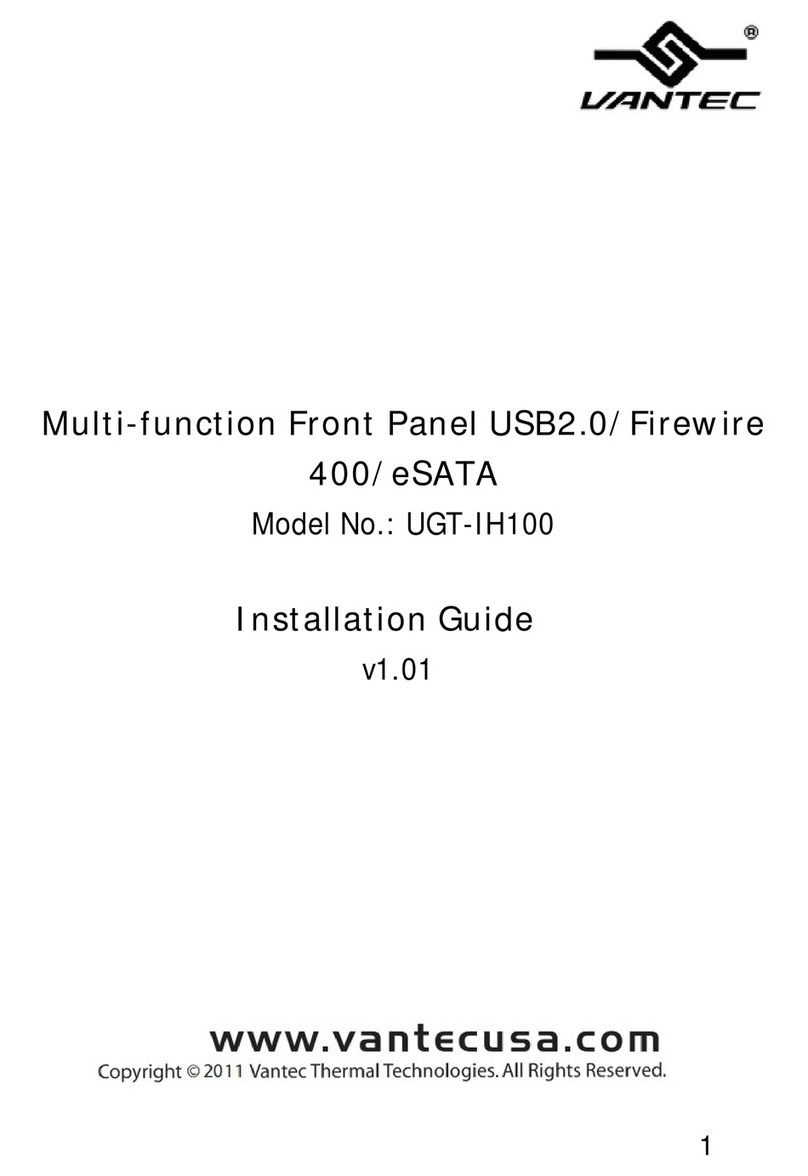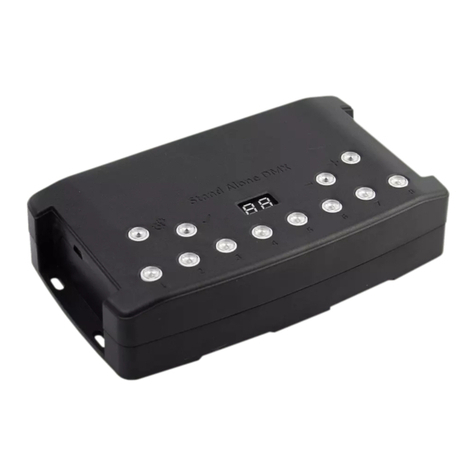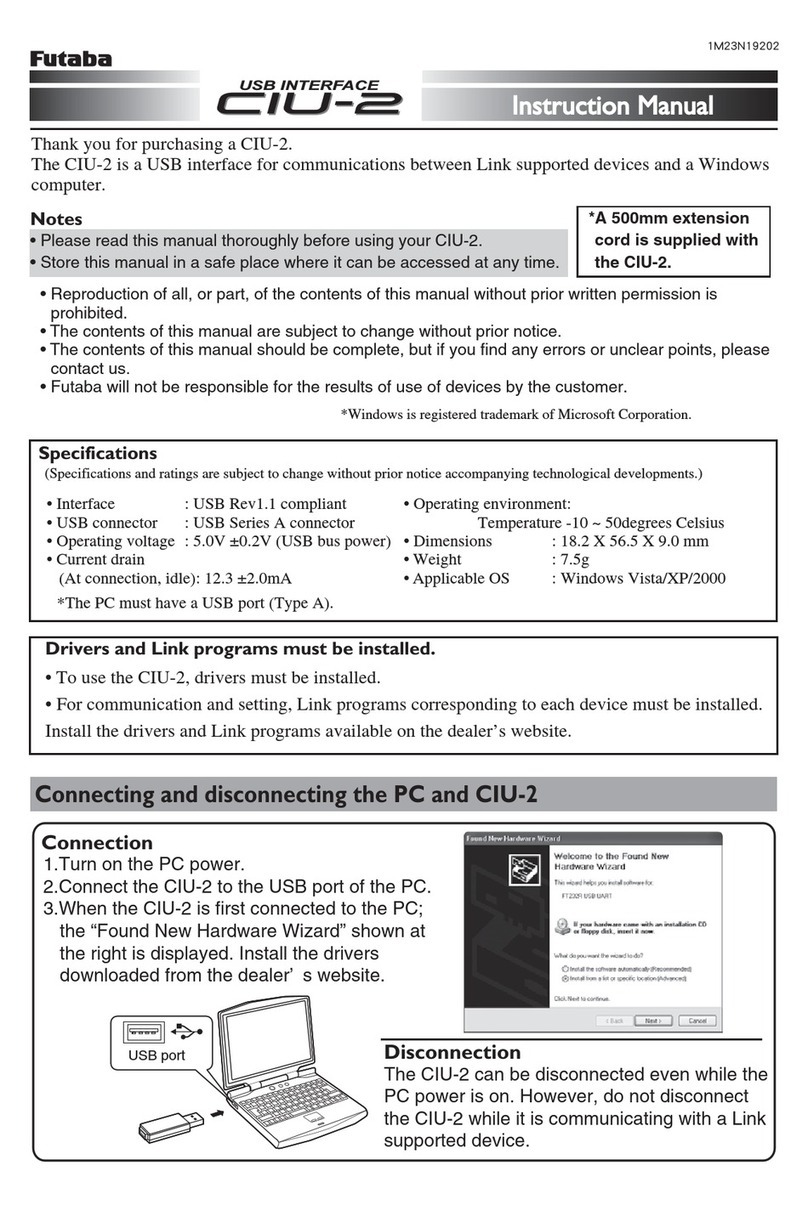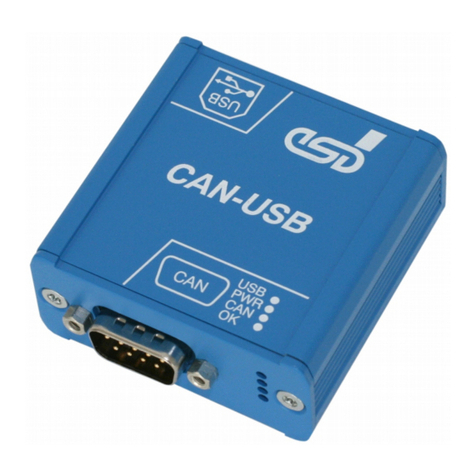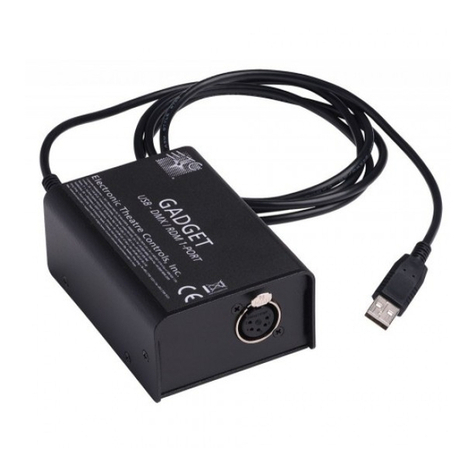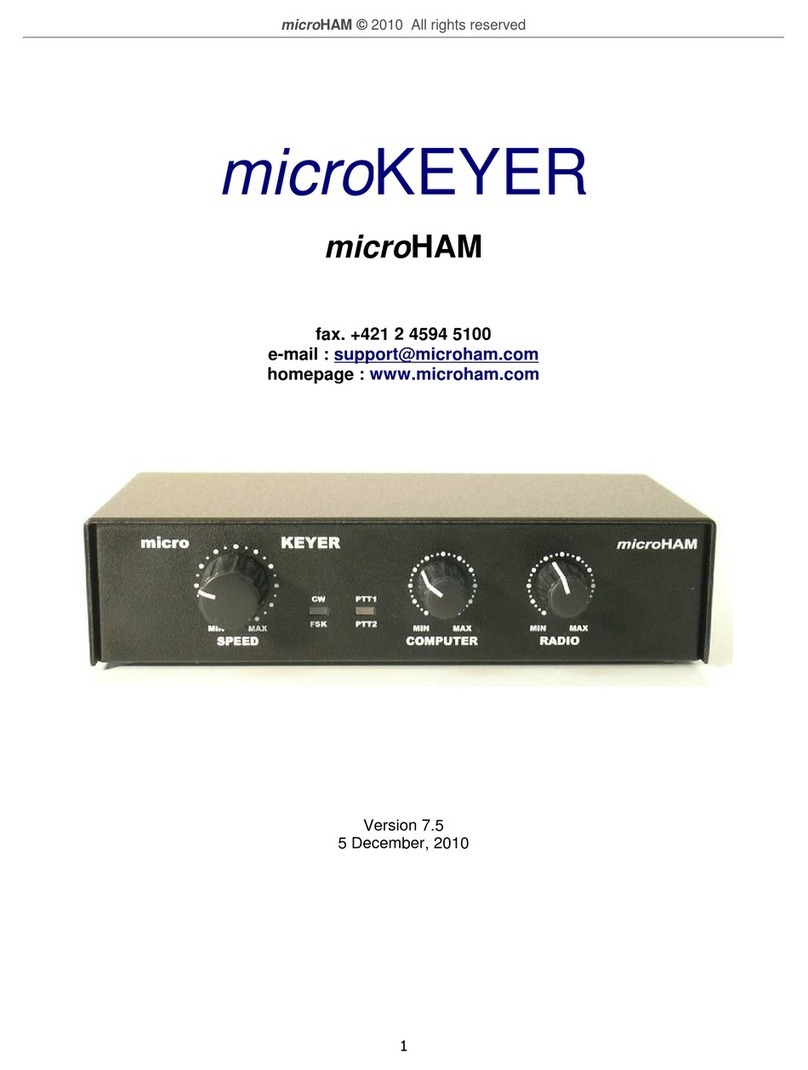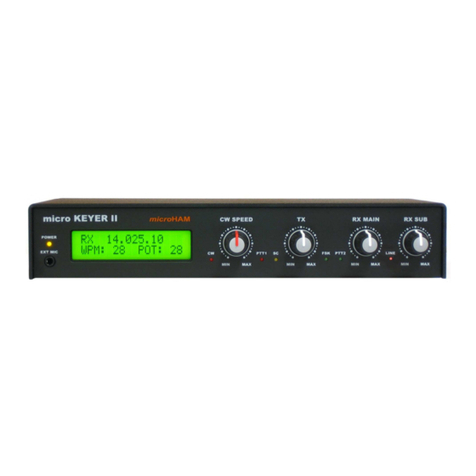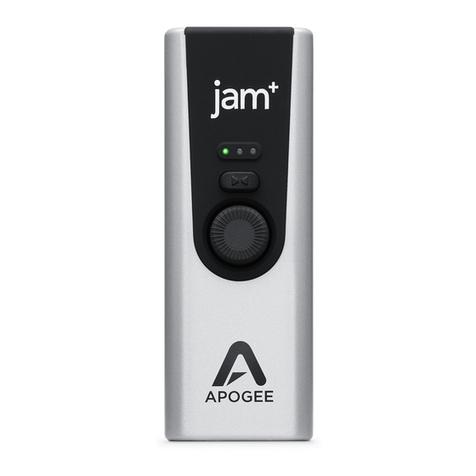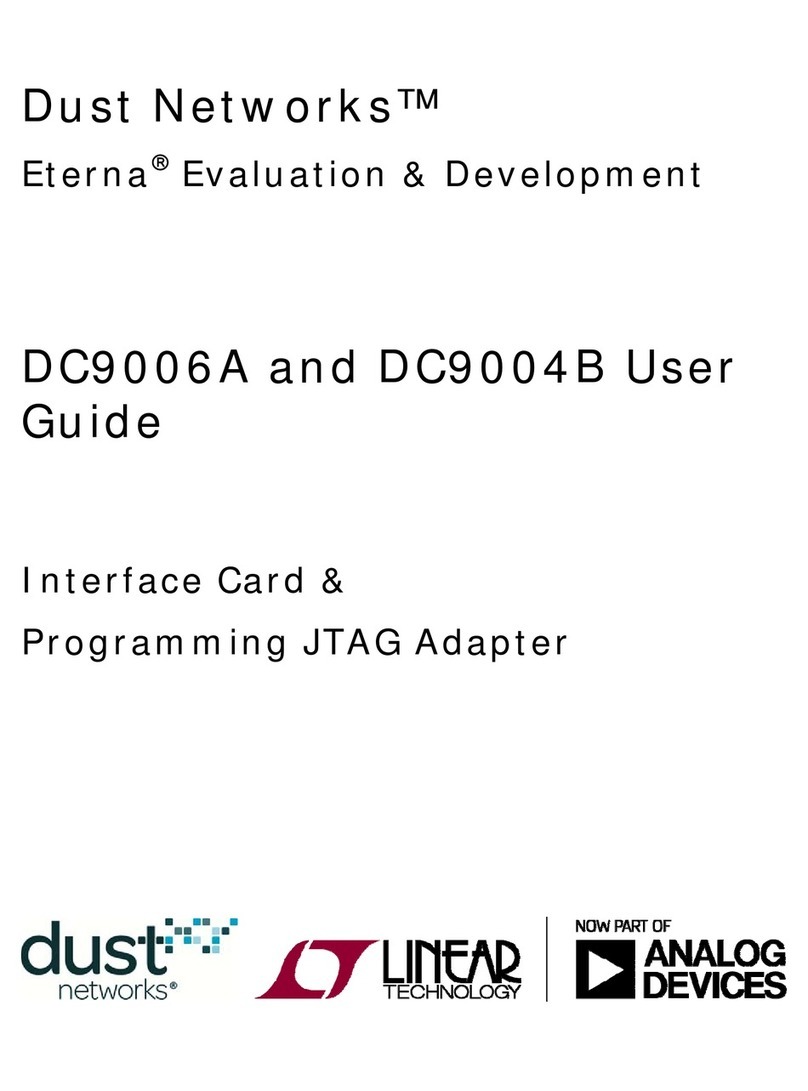ESD electronic CAN-USB/2 Instruction manual

Installation and technical Data CAN-USB/2 Rev. 1.0
esd electronic system design gmbh
Vahrenwalder Str. 207 • 30165 Hannover • Germany
www.esd-electronics.com • Fax: 0511/37 29 8-68
Phone: 0511/37 29 80 • International: +49-5 11-37 29 80
CAN-USB/2
USB 2.0-CAN-Interface
Hardware Installation
and
technical Data
to Product C.2066.xx

Installation and technical Data CAN-USB/2 Rev. 1.0
N O T E
The information in this document has been carefully checked and is believed to be entirely reliable. esd
makes no warranty of any kind with regard to the material in this document, and assumes no
responsibility for any errors that may appear in this document. esd reserves the right to make changes
without notice to this, or any of its products, to improve reliability, performance or design.
esd assumes no responsibility for the use of any circuitry other than circuitry which is part of a product
of esd gmbh.
esd does not convey to the purchaser of the product described herein any license under the patent rights
of esd gmbh nor the rights of others.
esd electronic system design gmbh
Vahrenwalder Str. 207
30165 Hannover
Germany
Phone: +49-511-372 98-0
Fax: +49-511-372 98-68
E-mail: info@esd-electronics.com
Internet: www.esd-electronics.com
USA / Canada:
esd electronics Inc.
525 Bernardston Road
Suite 1
Greenfield, MA 01301
USA
Phone: +1-800-732-8006
Fax: +1-800-732-8093
E-mail: us-sales@esd-electronics.com
Internet: www.esd-electronics.us

Installation and technical Data CAN-USB/2 Rev. 1.0
Document file: I:\texte\Doku\MANUALS\CAN\USB-2\Englisch\USB-2_01.en9
Date of print: 22.06.2006
PCB version: CAN-USB/2 Rev. 1.2
Changes in chapters
The changes in the document listed below affect changes in the hardware as well as changes in the
description of facts only.
Chapter Changes versus previous version
- First issue
Technical details are subject to change without further notice.

Installation and technical Data CAN-USB/2 Rev. 1.0
This page is intentionally left blank.

Installation and technical Data CAN-USB/2 Rev. 1.0 1
Content
1. Overview .................................................................3
1.1ModuleDescription.......................................................3
1.2CaseViewwithLEDandConnectorDescription.................................4
1.3LED-Displays ...........................................................5
2. Hardware Installation .......................................................6
3. Summary of technical Data ................................................... 7
3.1GeneraltechnicalData..................................................... 7
3.2 USB-Interface and Microcontroller ...........................................7
3.3CANInterface...........................................................8
3.4 Software Support ........................................................8
3.5Order Information ....................................................... 9
4. Connector Assignment ..................................................... 10
4.1 CAN Interface at DSUB9 Connector ......................................... 10
4.2USB-Socket ........................................................... 11
5. Correctly Wiring Electrically Isolated CAN Networks ............................ 12
6. CAN-Bus Troubleshooting Guide ............................................. 16
6.1Termination ........................................................... 16
6.2CAN_H/CAN_LVoltage ................................................. 17
6.3Ground ............................................................... 17
6.4CANTransceiverResistanceTest ........................................... 18

Installation and technical Data CAN-USB/2 Rev. 1.0
2
This page is intentionally left blank.

Overview
Installation and technical Data CAN-USB/2 Rev. 1.0 3
+5 V=
+5 V=
Physical
CAN
Layer
C
A
N
B
U
S
CAN
ARM
LPC 2292
CAN
16 kB RAM
256 kB Flash
USB Controller
LEDs
Digital
Isolator
Electrical Isolation
DC/DC
Converter
DSUB9
CiA pinning
Power
Supply
5 V(DC) USB-
Connector
1. Overview
1.1 Module Descri
p
tion
Fi
g
ure 1.1: Block-circuit diagram of CAN-USB/2 module
The CAN-USB/2 module is an intelligent CAN interface with an ARM LPC2292 micro controller for
local CAN data management. The module supports the USB 2.0 Hi-Speed interface with data transfer
rates of 480 Mbit/s.
The ISO 11898-compliant CAN interface allows a maximum data transfer rate of 1 Mbit/s. Like many
other features of CAN interfaces, the bit rate can be set by means of software.
CAN interface and other voltage potentials are electrically isolated by means of a digital isolater and
DC/DC converters.
The supply voltage is fed via the USB bus.
The module is equipped with four green LEDs in the front panel which indicate the current module
status.

Overview
Installation and technical Data CAN-USB/2 Rev. 1.0
4
1.2 Case View with LED and Connector Descri
p
tion
Fi
g
ure 1.2.1: CAN Interface and LEDs
Fi
g
ure 1.2.2: USB Interface

Overview
Installation and technical Data CAN-USB/2 Rev. 1.0 5
1.3 LED-Dis
p
la
y
s
LED NAME Status Description
LED300D USB on USB module is enumerated
(a node-ID is assigned to the USB module)
short-time
switch off
the module receives data from USB bus or
sends data on USB bus
LED300C Power on module is in operation,
the 5 V power supply is applied to the module
LED300B CAN flashes data is received or send on the CAN bus
LED300A OK on CAN interface is initialized, bit rates are set
off CAN Error occurred
Table 1.3: Description of LED display

Installation
Installation and technical Data CAN-USB/2 Rev. 1.0
6
2. Hardware Installation
Installation
p
rocedure:
1. Switch off the PC and all connected peripheral devices (monitor, printer, etc.). Additionally,
switch off all other CAN devices to whose network the CAN module is to be connected in this
procedure.
2. Connect the CAN-USB/2-module with the USB bus of the PC.
3. Connect the CAN bus to the 9-pin male DSUB connector.
Please remember that the CAN bus has to be terminated at both ends. esd offers T-connectors and
terminators. Additionally, the CAN-GND-signal has to be grounded at exactly one point in the
CAN network. Therefore the CAN termination connectors have got a grounding contact. A CAN
device whose CAN interface is not electrically isolated corresponds to the grounding of the CAN-
GND.
4. Connect your PC to mains again.
5. Switch on the PC, the peripheral devices and the other CAN bus devices.
6. End of hardware installation.
Note: The software installation is described in the manual ‘CAN-API, Installation Guide’.

Technical Data
Installation and technical Data CAN-USB/2 Rev. 1.0 7
3. Summar
y
of technical Data
3.1 General technical Data
Temperature range 0...50C ambient temperature
Humidity 90 %, non-condensing
Power supply
via USB 2.0 bus,
nominal voltage: 5 V
current consumption: max. 250 mA *
Connectors
X210 (DSUB9/male) - CAN bus
X300 (USB socket, series B) - USB bus
X200 (intern) - Service interface
Case dimensions 55 mm x 55 mm x 25 mm
IP-rating IP 40
Weight 70 g
Table 3.1: General Data of CAN-USB/2-Module
* Note: Please note that the current consumption of the module of 250 mA has to be supplied
(high powered bus-powered device).
The maximum current consumption of 250 mA has to be guaranteed also if a hub is
used. Therefore it is highly recommended to use a self-powered hub.
3.2 USB-Interface and Microcontroller
USB controller PLX NET2272
USB-interface USB 2.0, bitrate up to 480 Mbit/s
Microcontroller ARM LPC 2292
Memory 3 k x 16 bit SRAM,
64 k x 16 bit flash EPROM
Table 3.2: USB interface and microcontroller

Technical Data
Installation and technical Data CAN-USB/2 Rev. 1.0
8
3.3 CAN Interface
Number of CAN interfaces 1x CAN
CAN controller LPC2292
CAN protocol Basic-CAN 2.0A/B
Physical Layer according to ISO 11898, transmission rate programmable from
10 Kbit/s to 1 Mbit/s
Bus termination has to be set externally
Electrical isolation of CAN-
interfaces from other units via digital isolators and DC/DC converters
Table 3.3: Data of CAN interface
3.4 Software Su
pp
ort
For CAN-USB/2 drivers for Windows and Linux are available.

Technical Data
Installation and technical Data CAN-USB/2 Rev. 1.0 9
3.5 Order Information
Type Features Order No.
CAN-USB/2 1 x CAN 2.0A/B, ISO 11898, USB 2.0 C.2066.02
CAN-DRV-LCD Object-Licence for Windows and Linux C.1101.02
CAN-USB/2-Co CANopen master/slave object licence C.2066.12
CAN-USB/2-ME User manual in English. 1*) C.2066.21
CAN-API-ME CAN-API manual in English to C.1101.02 1*) C.2001.21
CAN-USB/2-ENG
Engineering manual in English 2*)
Content: Circuit diagrams, PCB top overlay
drawing, data sheets of significant components
C.2066.25
1*) If ordered together with the module, the manual is included in the shipment.
2*) This manual is liable for costs, please contact our support.
Table 3.5: Order information

Installation and technical Data CAN-USB/2 Rev. 1.0
10
Connector Assignment
4. Connector Assi
g
nment
4.1 CAN Interface at DSUB9 Connector
The connector is a 9-pin male DSUB connector.
Pin Position:
Pin Assignment:
Signal Pin Signal
1 reserved
(CAN_GND) 6 2CAN_L
CAN_H 7 3 CAN_GND
reserved 8 4 reserved
reserved 9 5Shield
9-pin DSUB connector
Signal description:
CAN_L, CAN_H... CAN signal lines
CAN_GND ... reference potential of local CAN physical layer
(CAN_GND) ... optional reference potential of local CAN physical layer
Shield... Shielding (connected with case of 9-pin DSUB connector)
reserved ... reserved for future applications

Installation and technical Data CAN-USB/2 Rev. 1.0 11
2
34
1
Connector assignment
4.2 USB-Socket
Attention: The module may only be operated at USB nets with USB interface version numbers
1.1-interface!
However, note that using versions earlier than 2.0 reduces the data transfer rate.
Pin position:
Pin Assignment:
Pin Signal
1V
BUS
2D-
3D+
4 GND
Shell Shield
USB socket (series B)

Wiring
Installation and technical Data CAN-USB/2 Rev. 1.0
12
9
1
4
5
6
7
9
2
3
8
1
4
5
6
7
2
3
8
CAN_L
CAN_H
CAN_GND
Shielded wire with
transposed wires
CAN_L
CAN_H
CAN_GND
(at wire shield)
120 Ohm
120 Ohm
earth (PE)
Wire structure Signal assignment of wire and connection of earthing and terminator
n.c.
n.c.
n.c.
n.c.
n.c.
n.c.
n.c.
n.c.
n.c.
n.c.
n.c.
n.c.
n.c.
n.c.
n.c. = not connected
DSUB9 connector
(female or male)
pin designation
connector case connector case
DSUB9 connector
(female or male)
pin designation
CAN wire with connectors
5. Correctl
y
Wirin
g
Electricall
y
Isolated CAN Networks
Generally all instructions applying for wiring regarding an electromagnetic compatible installation,
wiring, cross sections of wires, material to be used, minimum distances, lightning protection, etc. have
to be followed.
The following general rules for the CAN wiring must be followed:
1.
A CAN net must not branch (exception: short dead-end feeders) and has to be terminated
by the wave impedance of the wire (generally 120 W ±10%) at both ends (between the
signals CAN
_
L and CAN
_
H and not at GND)!
2.
A CAN data wire requires two twisted wires and a wire to conduct the reference potential
(CAN
_
GND)!
For this the shield of the wire should be used!
3. The reference potential CAN
_
GND has to be connected to the earth potential (PE) at one
point. Exactly one connection to earth has to be established!
4. The bit rate has to be adapted to the wire length.
5. Dead-end feeders have to kept as short as possible (l < 0.3 m)!
6. When using double shielded wires the external shield has to be connected to the earth
potential (PE) at one point. There must be not more than one connection to earth.
7. A suitable type of wire (wave impedance ca. 120 :±10%) has to be used and the voltage
loss in the wire has to be considered!
8. CAN wires should not be laid directly next to disturbing sources. If this cannot be avoided,
double shielded wires are preferable.
Fi
g
ure: Structure and connection of wire

Wiring
Installation and technical Data CAN-USB/2 Rev. 1.0 13
l< 0,3 m
CAN_L
CAN_GND
CAN_H
PE
l< 0,3 m
CAN-CBM-
AI4
CAN-CBM-
COM1
CAN-CBM-
DIO8
l< 0,3 ml< 0,3 ml< 0,3 m
Female Connector
Male Connector
e.g.
CAN-SPS Interface
CSC595/2
or
CAN-PC Board
Terminator
Male Terminator
(Order-no.: C.1302.01)
Connecting
CAN_GND to
Protective Conductor PE
Terminator
with PE Connector
Female Terminator
(Order-no.: C.1301.01)
T-Connector
C.1311.03
CAN-Cable
Order-no.: C.1323.03
Net 2
Net 1
e.
g
. PCI/405,
CAN-USB,
VME-CAN2, etc.
CAN-Cable
Order-no.: C.1323.03
CAN-Cable
Order-no.: C.1323.03
T-Connector
C.1311.03
T-Connector
C.1311.03
T-Connector
C.1311.03
CAN-Board
T-Connector
Order-no.: C.1311.03
Cablin
g
for devices which have only one CAN connector per net use T-connector and dead-end feeder
(shorter than 0.3 m) (available as accessory)
Figure: Example for correct wiring (when using single shielded wires)
Terminal Resistance
use external terminator, because this can later be found again more easily!
9-pin DSUB-terminator with male and female contacts and earth terminal are available as
accessories
Earthin
g
CAN_GND has to be conducted in the CAN wire, because the individual esd modules are
electrically isolated from each other!
CAN_GND has to be connected to the earth potential (PE) at exactly one point in the net!
each CAN user without electrically isolated interface works as an earthing, therefore: do not
connect more than one user without potential separation!
Earthing CAN e.g. be made at a connector

Wiring
Installation and technical Data CAN-USB/2 Rev. 1.0
14
Wire Len
g
th
Optical couplers are delaying the CAN signals. By using fast optical couplers and testing each
board at 1 Mbit/s, however, esd CAN guarantee a reachable length of 37 m at 1 Mbit/s for most
esd CAN modules within a closed net without impedance disturbances like e.g. longer dead-end
feeders. (Exception: CAN-CBM-DIO8, -AI4 and AO4 (these modules work only up to 10 m with
1 Mbit/s))
Bit rate
[Kbit/s]
Typical values of reachable
wire length with esd
interface lmax [m]
CiA recommendations
(07/95) for reachable wire
lengths lmin [m]
1000
800
666.6
500
333.3
250
166
125
100
66.6
50
33.3
20
12.5
10
37
59
80
130
180
270
420
570
710
1000
1400
2000
3600
5400
7300
25
50
-
100
-
250
-
500
650
-
1000
-
2500
-
5000
Table: Reachable wire lengths depending on the bit rate when using esd-CAN interfaces

Wiring
Installation and technical Data CAN-USB/2 Rev. 1.0 15
Exam
p
les for CAN Wires
Manufacturer Type of wire
U.I. LAPP GmbH
Schulze-Delitzsch-Straße 25
70565 Stuttgart
Germany
www.lappkabel.de
e.g.
UNITRONIC ®-BUS CAN UL/CSA (UL/CSA approved)
UNITRONIC ®-BUS-FD P CAN UL/CSA (UL/CSA approved)
ConCab GmbH
Äußerer Eichwald
74535 Mainhardt
Germany
www.concab.de
e.g.
BUS-PVC-C (1 x 2 x 0.22 mm²) Order No.: 93 022 016 (UL appr.)
BUS-Schleppflex-PUR-C (1 x 2 x 0.25 mm²) Order No.: 94 025 016 (UL appr.)
SAB Bröckskes GmbH&Co. KG
Grefrather Straße 204-212b
41749 Viersen
Germany
www.sab-brockskes.de
e.g.
SABIX® CB 620 (1 x 2 x 0.25 mm²) Order No.: 56202251
CB 627 (1 x 2 x 0.25 mm²) Order No.: 06272251 (UL appr.)
Note: Completely configured CAN wires can be ordered from esd.

CAN-Bus Troubleshooting Guide
Installation and technical Data CAN-USB/2 Rev. 1.0
16
120 :
CAN_H
CAN_GND
CAN_L
CAN_L
CAN_H
CAN_GND
V
:
120 :
23
1
V
1
6. CAN-Bus Troubleshootin
g
Guide
The CAN-Bus Troubleshooting Guide is a guide to find and eliminate the most frequent hardware-error
causes in the wiring of CAN-networks.
Fi
g
ure: Simplified diagram of a CAN network
6.1 Termination
The termination is used to match impedance of a node to the impedance of the transmission line being
used. When impedance is mismatched, the transmitted signal is not completely absorbed by the load
and a portion is reflected back into the transmission line. If the source, transmission line and load
impedance are equal these reflections are eliminated. This test measures the series resistance of the
CAN data pair conductors and the attached terminating resistors.
To test it, please
1. Turn off all power supplies of the attached CAN nodes.
2. Measure the DC resistance between CAN_H and CAN_L at the middle and ends of
the network (see figure above).
The measured value should be between 50 and 70 . The measured value should be nearly the same
at each point of the network.
If the value is below 50 , please make sure that:
- there is no short circuit between CAN_H and CAN_L wiring
- there are not more than two terminating resistors
- the nodes do not have faulty transceivers.
If the value is higher than 70 , please make sure that:
- there are no open circuits in CAN_H or CAN_L wiring
- your bus system has two terminating resistors (one at each end) and that they are 120 each.
Table of contents
